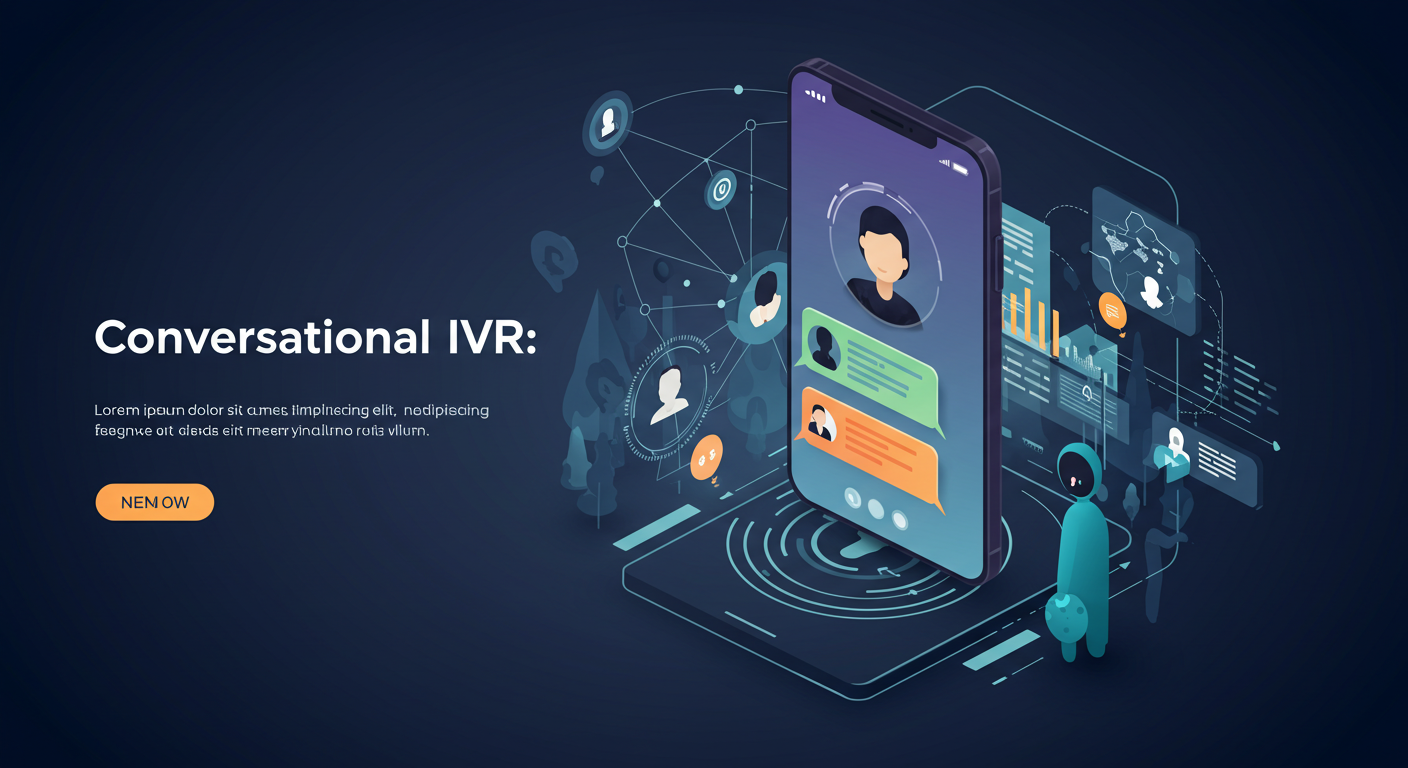When customers pick up the phone, they want a quick, human-like conversation, not a maze of “press 1, press 2.”
Conversational IVR replaces rigid phone menus with natural speech, allowing callers to say what they need and get it done quickly.
With modern Natural Language IVR Systems, you can answer common requests instantly, pass richer context to agents, and keep service levels steady, even on your busiest days.
This blog provides a closer look at how AI-powered IVR system development is transforming operations for businesses worldwide. Let’s get started.
What is Conversational IVR?
Conversational IVR is a voice system that understands plain speech (“I need to change my delivery date”), determines the intent, and either completes the task or routes the caller to the right person with a brief summary.
Think of it as a friendly, always-on receptionist that never forgets policy, doesn’t put people on hold, and knows when to bring a human in.
Why does it matter?
For callers, it means fewer menus and faster answers. For agents, it means fewer repetitive calls and better context on the ones that do escalate. For the business, it brings a lower cost per call, reliable service during peak periods, and clear data on what customers ask most, so you can address the root causes, not just the symptoms.
Getting the systems right can be challenging, especially if you’re just getting started. Therefore, it’s best to connect with a professional AI ML development company to get the best for your operations.
How does IVR work?
The caller speaks normally. The system listens, recognizes the request, checks your existing tools (order system, CRM, calendar), and carries out the action, like looking up an order or scheduling an appointment.
If the request requires a person, the system connects the caller to the appropriate queue and shares a brief summary of what has already happened. No repeating. No starting over.
Where Conversational IVR Helps First
- Order & delivery updates: “Where’s my package?” “Change delivery day.” Quick lookups and confirmations by text.
- Billing & payments: Balance, due date, one-time payment, plan change with simple verification.
- Appointments: Book, move, or cancel against live calendars; send reminders to cut no-shows.
- Account changes: Update address, email, or preferences with clear confirmations. It also helps in understanding the customer’s reason and mood, and routes them to the best team with a clear summary.
Design Rules for A Good Experience
Keep Prompts Short
Ask one thing at a time, using everyday words and ten-second prompts. Replace paragraphs with single sentences and examples (“last four digits of your card”). Cut filler, avoid acronyms, and prefer two or three choices. Short prompts reduce errors and speed completion.
Let Callers Interrupt
Enable barge-in so callers can correct names, dates, or options mid-sentence without interrupting the conversation. Keep the system listening between words, gracefully restart the current step, and confirm what changed. Natural turn-taking reduces frustration, improves perceived speed, and shortens average handle time.
Confirm the Important Bits
For high-stakes fields (names, amounts, addresses, dates), repeat back what you captured in plain language and ask for a yes/no. Offer an easy correction path (“change date”). Read numbers in groups, not individual digits, and avoid speaking too quickly, which can confuse older callers.
Always Offer an Exit
Every step should support a human escape hatch: “Agent, please.” Preserve context IDs, last actions, and intent summary so the transfer is warm, not a restart. Set expectations about hold time and ensure the agent views the caller’s existing history immediately.
Respect Privacy
Minimize what’s spoken aloud; never read full account numbers or one-time codes. Mask sensitive values in logs, time-limit recordings, and avoid repeating PII on transfers. Offer keypad entry for private data and explain why information is needed before requesting it.
Support Languages & Accessibility
Offer your top languages and let callers switch at any time. Use clear, steady speech and vocabulary that is free from regional accents. Provide captions on visual channels, descriptive alternatives for prompts, and slower playback options to support hearing, cognitive, and speech differences.
Operations & Governance
A great Conversational IVR doesn’t run on scripts alone; it runs on clear ownership, tidy content, and steady quality checks.
Start by naming a small, cross-functional team that owns the IVR experience, CX for voice and tone, Operations for queue logic, and IT for connections to your order, billing, and calendar systems.
Keep your knowledge base clean and current; the IVR should speak from the same facts your agents use. Set simple safety rules (what the IVR can and cannot say or do), and make it easy for callers to reach a human with all context attached.
Finally, measure a short list of outcomes every week (resolution, reopens, CSAT, and cost per resolved call) so that improvements are obvious and debates are brief.
Should You Consider Collaboration With A Partner?
You can pilot on your own; scaling quietly is a different approach. A team that offers AI ML development services and has shipped Natural Language IVR Systems will tune the voice experience for your products and accents, connect it safely to your systems, set up the right measurements, and help you grow by proof, not by hope.
Takeaway
Conversational IVR isn’t a new phone tree; it’s a helpful front desk for every caller. Let customers speak naturally, complete common tasks quickly, and connect with the right agent (with relevant context) when needed.
Keep the design simple, measure what matters, and expand only the parts that work. The result is shorter calls, happier customers, and a calmer contact center. Remember, having a conversational AI can be a game-changer for your business.

